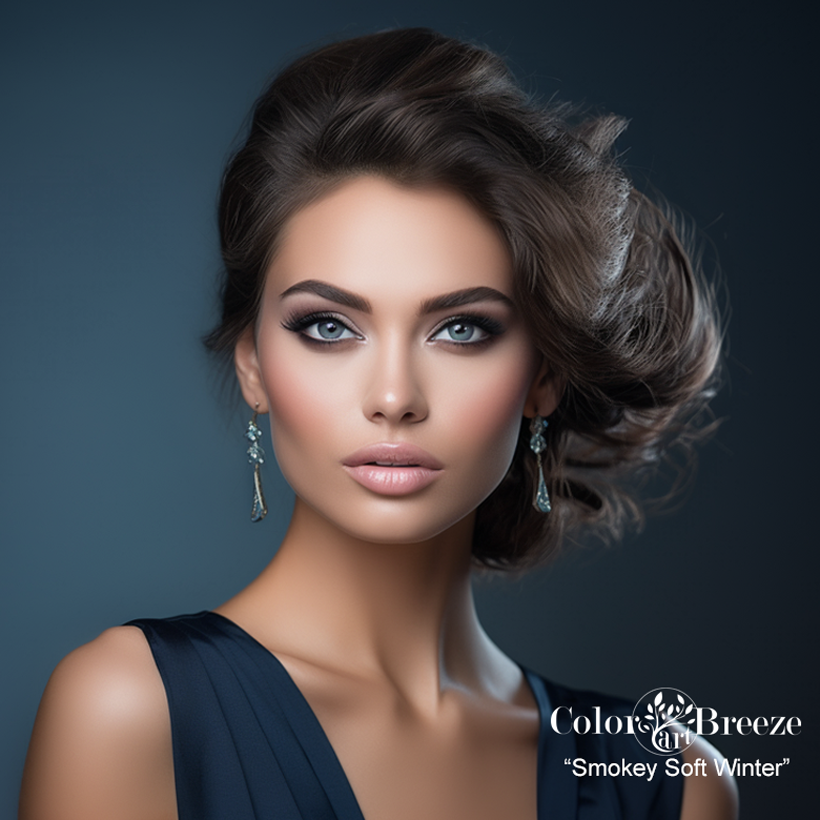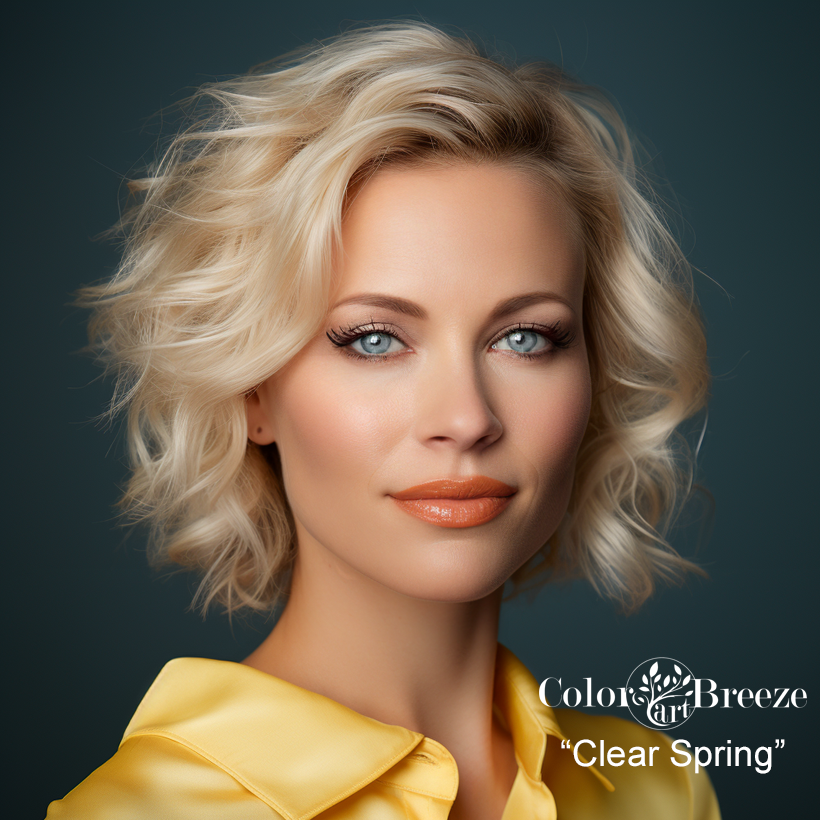Eye Color
Eye color is a very important factor in deciding one's season. It's not the only factor, but it is very important.
Eyes will often have many of the same characteristics of your season.
For example, Deep Winters and Autumns will have deep eyes. LIGHT seasons will have light eyes. And Clear Springs and Winters are mostly defined by bright and/or clear eyes.
This is why it is so important in an analysis.
However, note that eye color alone is not the only deciding factor in determining ones season. Hair and skin tone must also be taken into account.
But let's take a closer look at eyes.
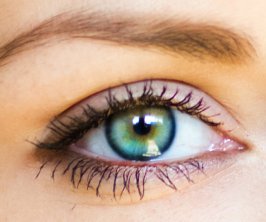 Clear EyesBright Blue, Green, or hazel eyes? You could be one of the Clear Springs or Clear Winters. But know that eyes that look clear can also be find in other Springs and even sometimes in Summers. |
 Soft EyesThe truly Soft Summers and Soft Autumns often have muddy, 'smudgy' eyes. They are the opposite of the clear eyes you will see in the Springs and Winters. |
Light Eyes Usually blue, green or hazel, ALL Light Summers and Light Springs will have light eyes. |
Deep Eyes Deep Autumns and Deep Winters all have dark eyes. |
Warm Eye Color Warm seasons like Warm Autumn and Warm Spring most often have matching warm eye colors like green, golden brown, and amber.
|
Cool Eye Color Cool Summers, Cool Winters and all of the all-cool sub-seaons usually have blue eyes (though cool grey, and even cool green can be found). |
Should Blue-Eyed People wear Blue Eyeshadow?
And other Eye Color Rules you might or might not want to follow
I used to sell swatches when I first started my business that I liked, but they had one really annoying feature to them. On the back of each color were the letters “I” and “E” in little boxes. The “I” stood for “Intensifier,” and the “E” stood for “Enhancer.”
The consultant was supposed to check the box if that particular color was considered one that would intensify or enhance the client’s eye or hair color.
I never utilized that and spent much time explaining to clients what the letters meant and why I didn’t choose any colors to mark.
The reason was that I don’t take too much stock in the theory behind it. Color theory states that colors that are opposite on the color wheel will intensify each other. This includes Red and Green, Blue and Orange, and yellow and purple/violet. They are called complementary colors.

So with the old swatches, the theory was that if you have, for example, blue eyes, you would want to wear orange to intensify the blue eyes. Or if you have, for example, red hair, you should wear lots of green to intensify your red hair.
Before I explain why I didn’t buy into this theory for my clients, I wanted to explain a few things about what complementary colors actually mean.
But it is a little confusing because most people confuse “complementary” with “complimentary,” the latter meaning “flattering” or “harmonizing.”
The root word of “complementary” is the same as for the word "complete." So, technically, complementary colors, when combined, complete a color spectrum. In other words, when combined, they will create white if we are talking about light or grey/black if we are talking about pigments.
These colors produce a strong contrast when they are next to each other and can create a jarring or clashing effect.

Seriously, do these colors really intensify each other? I find them irritating. I never could really see the intensifying effect when I was told about it in all of the art classes I’ve taken over the years.
But let's assume they do actually intensify each other.
How does this relate to color analysis?
It doesn’t, really. Not in any practical sense.
Here’s an example: while blue eyes are found almost every season, you will find them most often in Summers. As you may know, orange is not a color in any Summer palettes. Even those that flow into Spring, like the Sunlit or Light Summer, can, at best, handle some peach colors, but not in large doses.
So that theory doesn’t work for Summers.
And it doesn’t really work for Autumns, either. I have green eyes, as many Autumns do. The opposite of green is red. And finding a true red, with no blue or yellow undertones, can be challenging. If I do find a red top that is warm, it is usually too bright for me. Any red that is cherry red is way too cool for most Autumns. The best red for Autumns is a nice tomato red. Not bright, slightly warm red, muted slightly
My point is this: don’t wear a color because you think it will ‘intensify’ your eye color since it sits opposite on the color wheel. Only wear colors that are in your palette.
Enhancing Eye Color
Now, ‘enhancing’ your eye color is another story. There are ways of enhancing your eye color with colors that are already in your eyes.
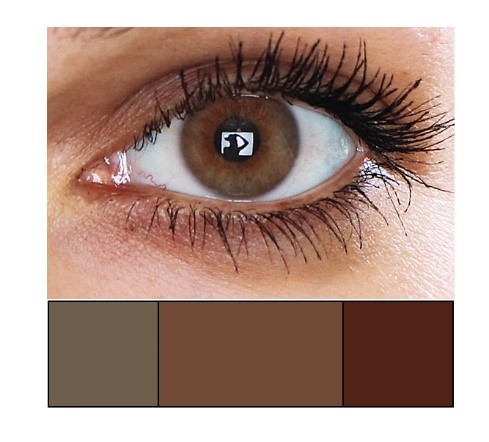
This eye color belongs to a Smokey Soft Autumn.
Those colors in her eye are also in her palette.
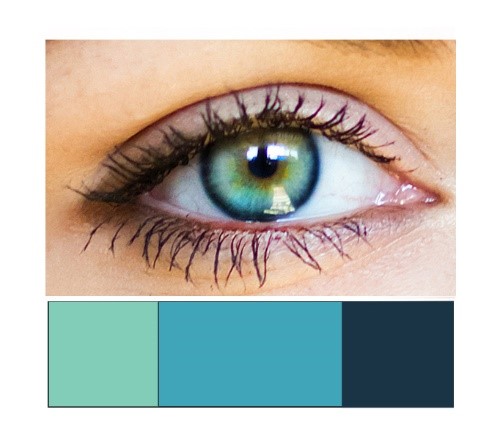
The same goes for Clear Spring eye – aqua, spring blue, and navy. These colors are found in her color palette, too.
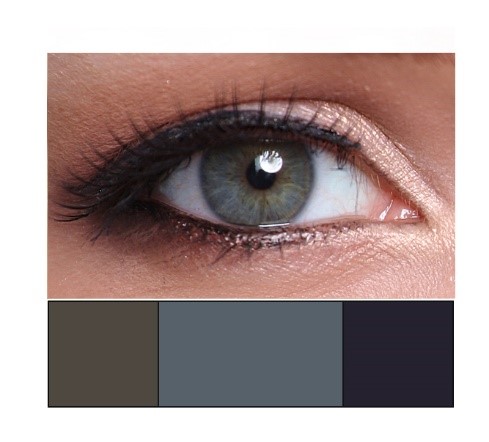
And the same goes Smokey Soft Summer eyes. You will see the soft blues and greys visible in her eye will also be found in her palette.
If the colors (or close variations) are in your palette, wear these colors in eyeshadows and liners, and you will definitely enhance your eye color(s). The same goes for tops and scarves too.
Going back to my original point of this lesson, here is a great example of what I’m referring to with regard to the concept of ‘intensifying’ eye colors by wearing its opposite color or ‘enhancing’ eyes by wearing colors that are already in your iris AND are in your palette.

The same goes for clothes and accessories. Both the orange top and the teal/aqua look great on this lady since they are in her Warm Spring palette.
The orange looks great since it harmonizes with her warm skin and hair. The orange is technically the opposite of the blue in her eyes. But which top color specifically enhances her beautiful blue eyes? Her blue top!
To summarize, wear colors in your palette. And to specifically enhance eye color, find a color(s) that are already in your eyes, and they will pop even more.
Want to see how to change your season with just a pair of contact lenses? Click here.
